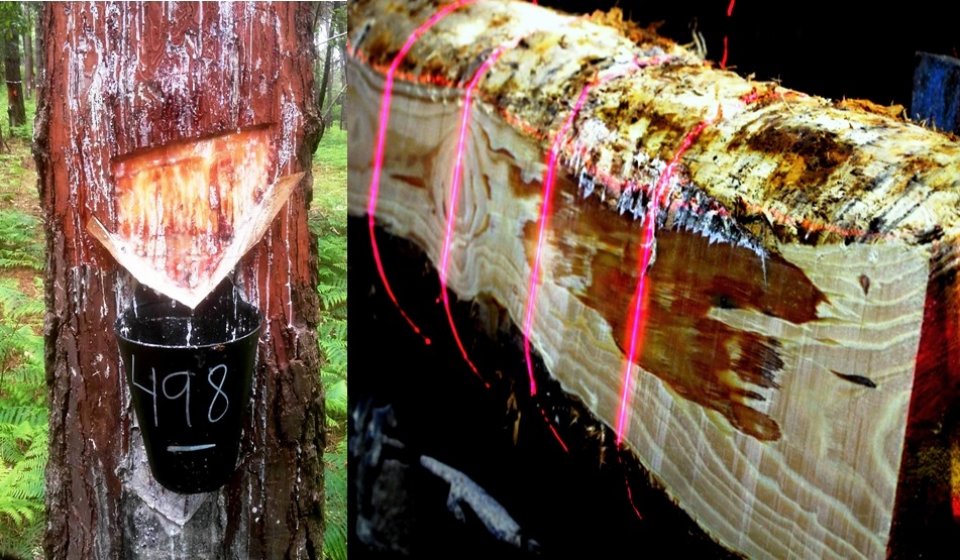
Explore options in Pinus pinaster stand management with adapted methods to improve compatibility between resin and timber uses.
The aim is to verify whether the 20 cm wide resin tapping wounds, wider than the traditional 12 cm, can lead to an increase in the annual resin production per tree and if this tapping method is compatible with the traditional wood use in Galicia.
Studies of the wound tapping method with chemical stimulation, carried out in Galicia between 1950 and 1970, reported a mean resin yield of 2-3 kg per tree in Pinus pinaster Ait. Nowadays, the regional interest in resin production has been reactivated, and methods are being adapted to ensure the compatibility with the timber use.
Timber production is the main use in the NW of Spain. If a wider resin tapping wound would produce more resin than the traditional wound width, the use of resin in pine stands near the age of logging could be more easily integrated in the timber use management scheme.
In trees that had been tapped in previous years with a 12 cm width face, opening a 20 cm width face (C12-20) produces 21.8% more resin than a new 12 cm face (C12-12) -see figure 2.
By opening a 20 cm face (T20) on trees that have never been tapped, it produces 21.5% more resin than with a 12 cm face (T12).
Opening a 20 cm face in either case with and without prior tapping, increases production by 21-22%, although total production is much higher in previously tapped trees (4.5kg versus 3.7kg). The positive effect of the 20cm face on resin production would be demonstrated if statistically confirmed when compared to the 12 cm face.
The tapping practised in this way has no significant effect on the subsequent use of the wood for sawing.
Further research is needed to increase knowledge leading to optimize the method and to improve its adaptation to multifunctional forestry. The conducted research leads to making progress with the method validity but optimization is needed to improve operational tapping mode and to establish adequate protocols about stand selection, tapping season or adequate time of application previous to logging.
In any case, the showed results open the possibility to practice an end-of-rotation tapping, 2-3 years before logging, applying the adapted wide resin tapping face method, which is compatible with the production of sawn timber in the Galician forests.
One of the greatest weaknesses associated with this initiative is the artisanal nature of resin extraction, and the low yields in the northwest Spain forests due mainly to the adverse orography, oceanic climate and dense undergrowth that, among other factors, make it difficult for the resin tapper to be competitive.
On the other hand, resin extraction is an activity that has not been traditionally contemplated in the management of the maritime pine forests in northwest Spain.
To carry out this work, the Forestry Research Centre of Lourizán has collected thousands of resin production, wood properties, dasometric and meteorological data that will be analysed to continue advancing in the adaptation of resin use to silviculture in Galician maritime pine forests.
Besides, it is planned to study the possible impact that this resin tapping mode near to logging has on the tree growth, as well as the effect on the physical properties of the wood.
Enrique Martínez Chamorro, enrique.martinez.chamorro@xunta.gal, https://lourizan.xunta.gal/
Further information
(c) CIF Lourizán

Resin production by wound size in previously tapped versus control trees (c) CIF Lourizán
